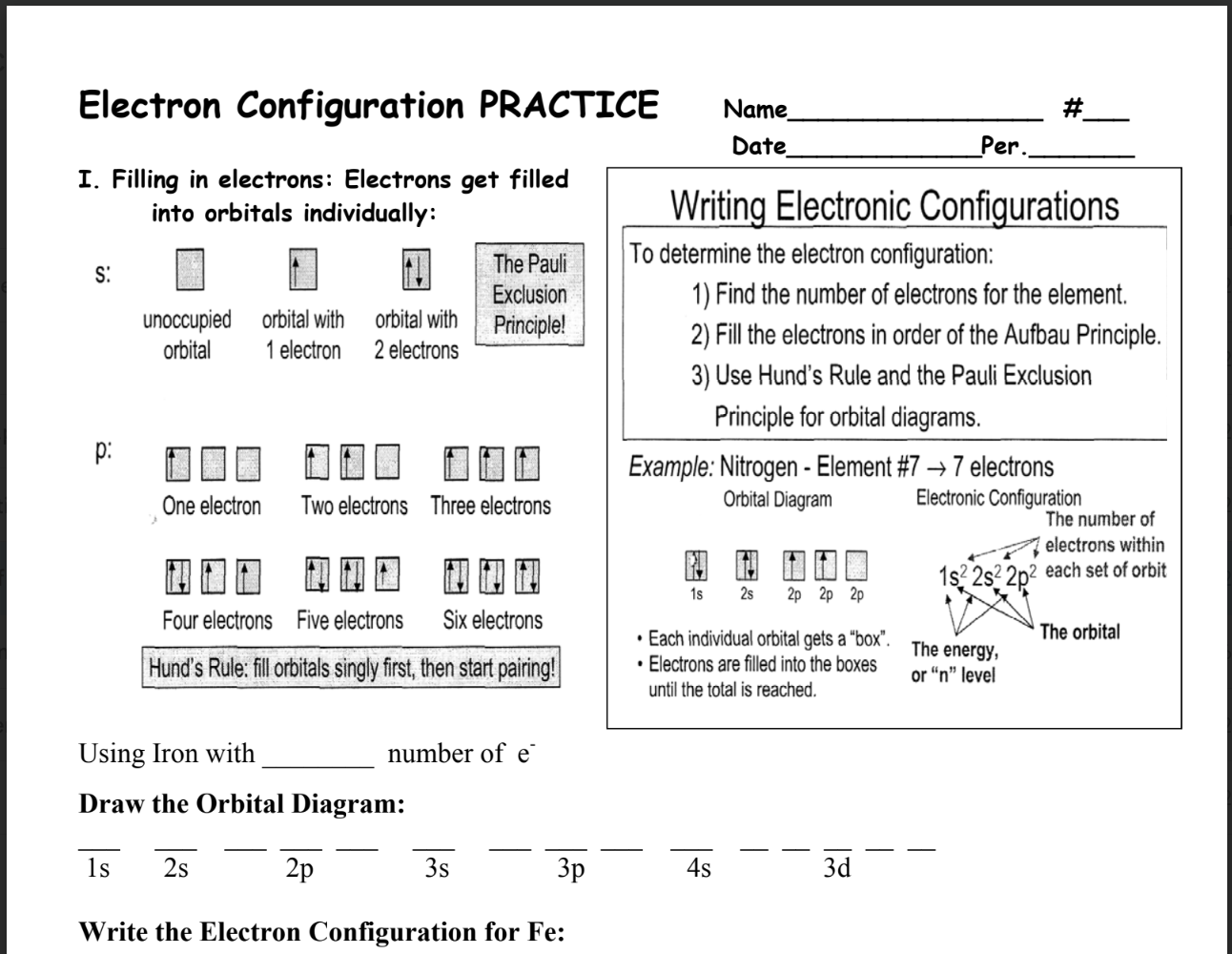Electron Configuration
Related Examples and Practice Problems
Topic Summary & Highlights
and Help Videos
Core Concept
Definition: Electron configuration describes the distribution of electrons in an atom's orbitals, following specific rules.
Purpose: It explains an atom's chemical properties, periodic trends, and bonding behavior.
Practice Tips
Electrons fill orbitals in order of increasing energy, and each subshell has a fixed capacity.
Valence electrons determine chemical properties and periodic trends.
Exceptions to configurations occur to achieve more stable half-filled or fully filled subshells.
Topic Overview Podcast
Topic Related Resources
|
LABORATORY
|
DEMONSTRATIONS
|
ACTIVITIES
|
VIRTUAL SIMULATIONS
|
Key Principles for Electron Configuration
Aufbau Principle:
Electrons fill orbitals starting with the lowest energy level.
Order of filling: 1s→2s→2p→3s→3p→4s→3d→4p→5s…
Pauli Exclusion Principle:
Each orbital can hold a maximum of 2 electrons, with opposite spins.
Hund's Rule:
Electrons fill orbitals of the same subshell singly before pairing up to minimize repulsion.
Example: In p-orbitals, electrons occupy px, py, and pz singly before pairing.
Notation
General Format:
n: Principal energy level.
l: Subshell type (s,p,d,fs, p, d, fs,p,d,f).
Superscript: Number of electrons in the subshell.
Example: $1s^2$ indicates 2 electrons in the 1s-orbital.
Shorthand Notation:
Use the previous noble gas in brackets to simplify the configuration.
Example: Sodium (Z=11):
Full: $1s^2 2s^2 2p^6 3s^1$
Shorthand: [Ne]$3s^1$
Exceptions to Electron Configuration
Some elements have electron configurations that deviate from the expected order to achieve more stable arrangements:
Chromium (Z=24):
Expected: $[\text{Ar}] 4s^2 3d^4$
Actual: $[\text{Ar}] 4s^1 3d^5$ (half-filled d-subshell is more stable).
Copper (Z=29):
Expected: $[\text{Ar}] 4s^2 3d^9$
Actual: $[\text{Ar}] 4s^1 3d^{10}$ (fully filled d-subshell is more stable).
Subshell Capacities
s: 1 orbital, 2 electrons.
p: 3 orbitals, 6 electrons.
d: 5 orbitals, 10 electrons.
f: 7 orbitals, 14 electrons.




